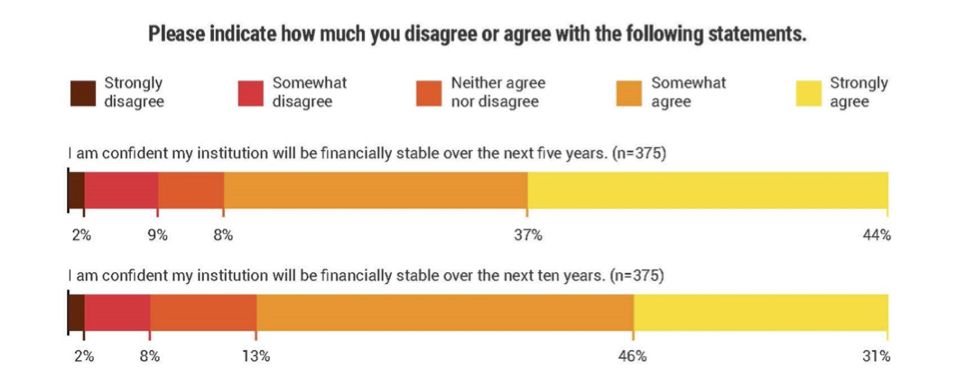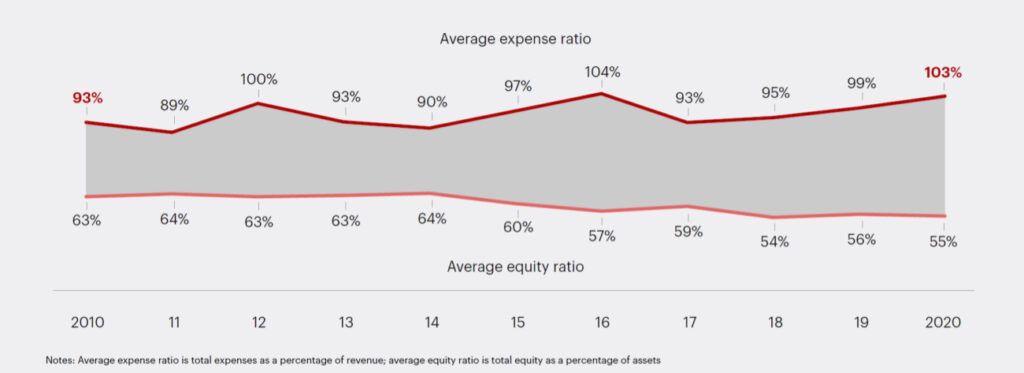
Inside Higher Ed’s 2022 Survey of College and University Presidents captured the sentiments above from almost 400 presidents. The responses above indicate that more 80% think their institution will be financially stable over the next five years, with a similar percentage projecting that financial stability will extend out ten years. A follow up survey with institutional business officers reveals the same financial optimism.
This financial exuberance runs counter to rpk’s experience in the field. Most colleges and universities used their short term HEERF funding from the federal government to fill financial holes in their FY 2022 and 2023 budgets. With that funding now expiring, the long-term structural issues present in institutions across the country are coming to the fore.
A recent analysis from Bain & Company shows that industry wide, higher education has moved into deficit territory. Expenses now exceed revenues. More alarmingly, over the past ten years, higher education has moved from a surplus (expenses at 93% of revenues) in 2010 to a deficit (expenses exceeding revenues by 3%) in 2020.
 Bain & Company.: The Financially Sustainable University, 2020
Bain & Company.: The Financially Sustainable University, 2020
Higher education as an industry requires bold changes to fulfill its promise of preserving access, increasing degree attainment and supporting enhanced economic opportunity for its graduates. The good news is that best practice is emerging to support institutions and systems in creating a sustainable business model. That best practice includes crafting academic portfolios that respond to demand from students and employers, streamlining the delivery of instruction and administrative services, and adopting performance measures to enhance transparency and accountability.
Use cases are increasingly emerging that demonstrate that a move to sustainable business models is possible. In Vermont, the four year institutions were consolidated into a new Vermont State University – maintaining student access while creating a financially stronger institution. Erie Community College recently outlined changes to realign institutional capacity with current and projected student demand. And the University of Kansas has undergone a comprehensive review of its academic portfolio, administrative services and resource allocation model to ensure a sustainable future.
Good leadership, by definition, requires an ability to point to a shared future vision and create hope in achieving that vision. The road to success, however, demands a reckoning with financial viability today, and a commitment to making tough choices in achieving a sustainable business model for tomorrow.

